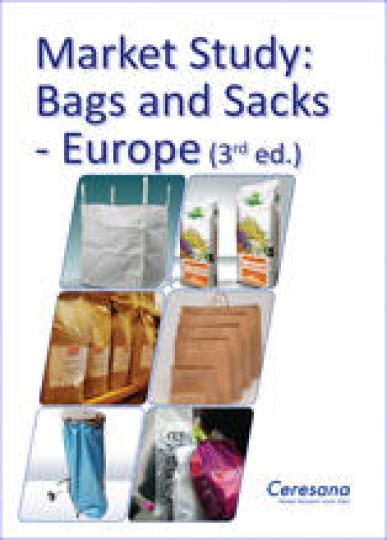Flexible & Pouches
Light, practical, controversial: Ceresana analyzed the European market for bags and sacks
Published
4 years agoon
By
BXP Reader
The European Union stipulates to further restrict the use of plastic carrier bags until 2025. In the public debate, however, products, numbers, and facts are often confused and important contributing factors are sometimes ignored entirely. The latest, third study on this subject by Ceresana therefore aims to make a contribution towards the objectification of this discussion. The report analyzes the entire European market for bags and sacks made from polyethylene film, films made from other plastics, woven plastic bags, and paper bags. Polyethylene is by far the most widely used material. However, the various materials may account for highly different market shares in individual applications.
Bags optimize food packaging
Bag packaging is increasingly popular in retail trade. It replaces, for example, metal cans, glass containers, or rigid plastic packaging. One of the advantages of flexible plastic bags is their superior capability to adjust to the packaged good, thereby optimizing the size of the packaging. Additionally, this form of packaging can also be produced in a microwave-compatible form and is increasingly easy to print on. Compared to the previous study, this current, more detailed analysis by Ceresana also splits the application area of food packaging into individual sub-segments.
Heavy duty sacks compete with containers
Heavy duty and industry sacks have gained importance in recent decades. In some segments, sacks made of plastic have replaced paper sacks entirely. Although paper sacks continue to play an important role in the segment of animal feed or building materials like cement, polyethylene sacks have the potential to gain further market shares in the future due to their positive properties. Yet, conventional heavy duty sacks made of plastic film are competing more and more with so called “flexible intermediate bulk containers” (FIBC), especially in the bulk goods segment. These FIBC consist of a sturdy plastic weave – most often made of polypropylene—and can achieve a capacity of up to 1,500 liters. They are often used as transport packaging for construction materials, fertilizers, grains or other bulk goods. The market dynamics for heavy duty sacks is highly dependent on the economic development of a country, particularly the construction industry and the demand for construction materials.
Bioplastics as an ambivalent alternative
AdvertisementPlastic products, especially thin single-use bags made of polyethylene, are subject to special taxes, fees or restrictions in more and more countries. Bioplastics that are either made from renewable materials, e.g. corn starch, or are at least biodegradable are often an exception to these regulations. The significance and public image of these bioplastics has considerably improved in recent years. This is also evident from the fact that these products are now taken into consideration by legislators. In the spring of 2019, the EU commission most recently commented positively on the potential of bioplastics in the field of packaging and carrier bags. However, even if this market is developing very dynamically, bioplastics alone are not the ultimate and ecologically immaculate solution that has long been propagated. There are, for example, still issues with the composting of some types of bioplastic in standard facilities. If biodegradable plastic disintegrates in open nature, the dispersion of micro particles could even increase.
Further information: www.ceresana.com/en/market-studies/packaging/bags-and-sacks-europe/
Editorial Note: This post was shared by a member of the BXP magazine community using our Community Voice tool.
Our website community uses the tool to post articles, thought-leadership reports and analyses, white papers, case studies, blog entries and op-eds, press releases and events about brand and package design or marketing. These posts are vetted and edited by our editorial staff for editorial relevance and decorum for branding, design, marketing and package design professionals. Approved and edited content then lives side-by-side with other editorial content. Overtly promotional content is not accepted, but we do have advertising options available for those interested in promoting their services or products.
AdvertisementDo you want to become a contributing author to the BXP website? Click here to learn how you can become a contributing member of the BXP Magazine community.

SPONSORED VIDEO
Branding with Ferocity – Thinking Like an Indie Brand
Get a better understanding on how to leverage new technologies to engage and delight shoppers, sustainability’s role in product and package design – being sustainable and premium are not mutually exclusive, plus best practices and tips for collaboration and how to launch new products and refresh existing product line-ups and brands.
You may like
Advertisement
Subscribe

BULLETINS
Get the most important news and business
ideas from BXP Magazine's news bulletin.
Advertisement







